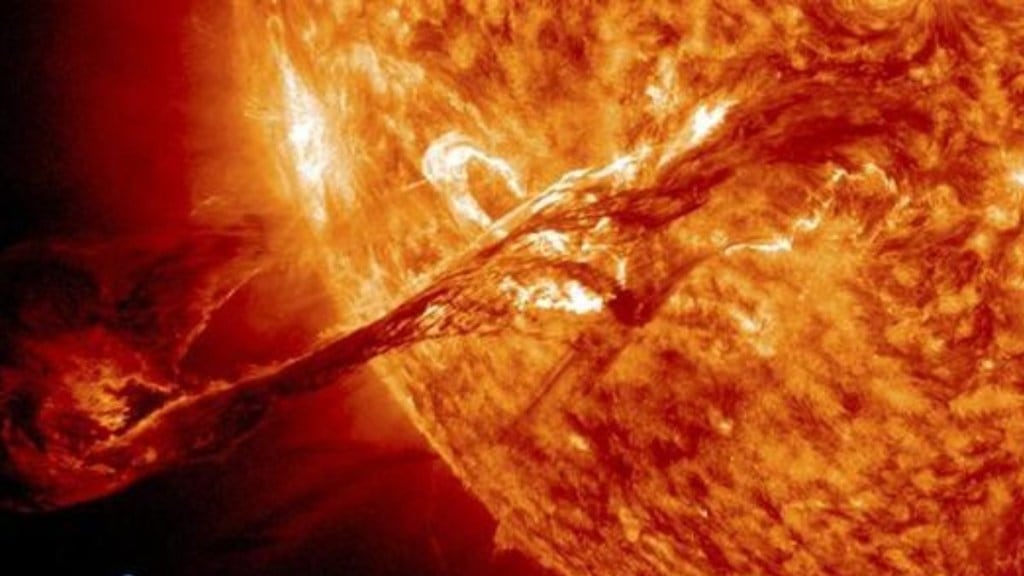This year the sun is expected to be superactive. It is anticipated that there will be a surge in solar flares, surface eruptions, and sunspots as the yellow star enters its most energetic phase in two decades. This heightened solar activity promises captivating aurora displays but also brings the potential for radio blackouts and disruptions to satellites.
Mark Miesch, a member of the solar modeling team at NOAA’s Space Weather Prediction Center, notes, “The level of activity here is the biggest it’s been since about 20 years, since about 2003.” If the sun mirrors its behavior from 2003, Earth could witness stunning auroras reaching as far as California, Texas, Florida, and Australia. However, it could also experience disruptions to spacecraft, satellite damage, and communication issues, as seen during the Halloween Storms of 2003.
Despite the bustling sun raising concerns, this heightened magnetic activity is part of the sun’s natural 11-year solar cycle. The sun is currently approaching its peak activity, expected between January and October 2024, with elevated activity likely to continue into 2025 or even 2026, according to Space Weather Prediction Center models.
The upcoming solar maximum is predicted to outshine recent cycles, already displaying stronger activity than initially anticipated. Solar physicist Scott McIntosh from the National Center for Atmospheric Research in Boulder, Colo., says, “We’ll see some fun stuff in the coming year or couple of years. We’re probably going to get fireworks, whether they’ll be equivalent to Halloween [2003], I don’t know. We should be prepared.”
What indicators reveal the sun’s peak activity?
Determining when the sun reaches peak activity involves tracking sunspots, temporary dark blotches on the sun’s surface that indicate heightened magnetic activity. Currently in its 25th solar cycle since observations began in the 1700s, the sun’s maximum is projected to have a sunspot number between 135 to 174 at its peak month.
While some predict a sunspot number within the average range, forecasting the sun’s behavior remains challenging. Regardless, even if this solar maximum falls slightly below average or arrives later, it promises to be far from boring.
Can we expect a significant storm?
Observers in 2023 already witnessed the sun’s vibrancy through rare aurora sightings and disrupted radio signals. The possibility of a G5 geomagnetic storm, akin to the dramatic Halloween Storms in 2003, looms, with the complexity of active regions being a crucial factor. The sun’s declining phase, post-solar maximum, may bring more direct hits and larger storms, extending the chance of experiencing these phenomena for another year or two.
Beyond the celestial light show, the solar maximum offers unique opportunities, such as the total solar eclipse on April 8. Scientists predict a more elaborate corona during totality, thanks to increased particle streams from the sun’s outermost atmosphere.

